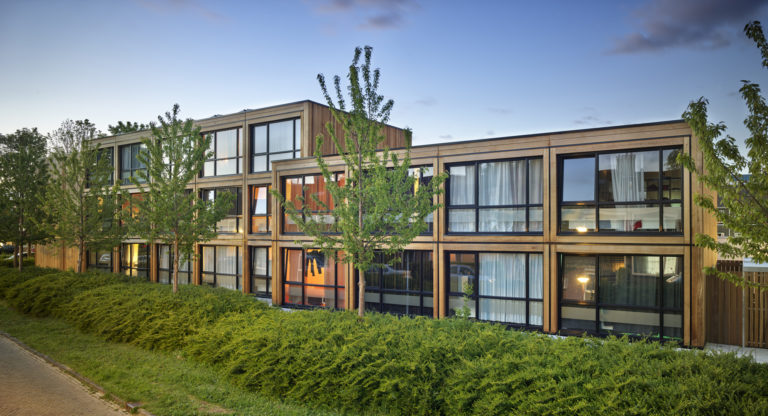"Who is the vulnerable occupant" and "How can you give the vulnerable a safe home? Today Ernest Kuiper (Manager Sales & Marketing at Finch Buildings) shares his experiences and tips.
What do you mean by "a vulnerable resident"?
Ernest: "In my opinion, a vulnerable resident is a resident who is not completely self-sufficient or does not have a need for care. This can be in terms of organisational support in the daily practice of life, or medical (home) help."
The number of vulnerable residents is increasing. What does this mean for your organisation?
Ernest: "We build and design modular, circular buildings made of solid wood. For my organisation, an increasing number of vulnerable residents means that we are receiving more and more requests from housing associations and care parties, for example for PG housing or mental health care."
We look forward to your experience with regard to the safety of residents. How can you give the vulnerable a safe home?
Ernest: "A safe home starts with a feeling of security. Because in practice it is more often a feeling of insecurity than a really unsafe situation. When designing a building, you can create such a feeling of security in the design of your building. Think, for example, of an enclosed courtyard and electronic access to a building with a video door entry system. But there are also sufficient provisions to be made in the home, depending on the target group."
Does your organization have a lot to do with loneliness among the elderly? And if so, how do you deal with this?
Ernest: "As an organisation, we don't have to deal with this, but we do design buildings to counteract this development. We solve this in the design with facilities such as communal living rooms, a "wash bar", communal gardens and access routes that promote interaction."
Cooperation between housing corporations and other parties is a recurring theme. How can we improve this cooperation in view of the vulnerable residents?
Ernest: "Collaboration between housing corporations and care institutions is actually very logical, especially after separating housing from care. The cooperation could be improved by building an even closer relationship at the front with the realisation of a jointly operated building. Ensure clarity in a 'Programme of Requirements' and remain realistic about the financial feasibility."
If you turn the problem around and try to look at it from another angle... Could you see vulnerable residents as an opportunity, for example, to reduce the workload and improve neighbourhoods? Can you explain this?
Ernest: "I believe that you shouldn't send people too much. The more you let people take the initiative, the more likely it is that there will be more to it than you previously thought. That is also what I think about supporting vulnerable groups. Adjust the minimum care requirement per person and provide 'tailor-made' support. In a larger number of cases, less care will ultimately be required than under the current system.
Someone learns more from it by (having to) figure something out for themselves, than when they completely chew on how to do something in advance. In the latter case, one learns a trick, instead of actually thinking about why something has to be done in a certain way."
Finally. Do you have 1 practical tip that corporations can benefit from?
Ernest: "Read the book 'Free money for everyone'. This is full of inspiring examples of how, among other things, care can be improved by simply setting up a basic income for everyone instead of benefits for vulnerable groups."

